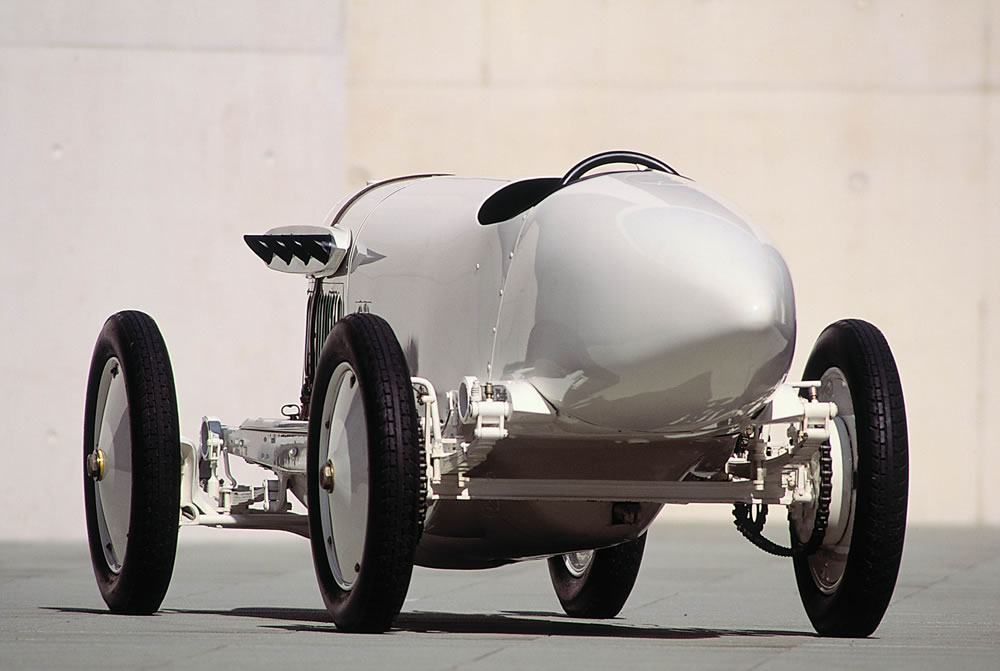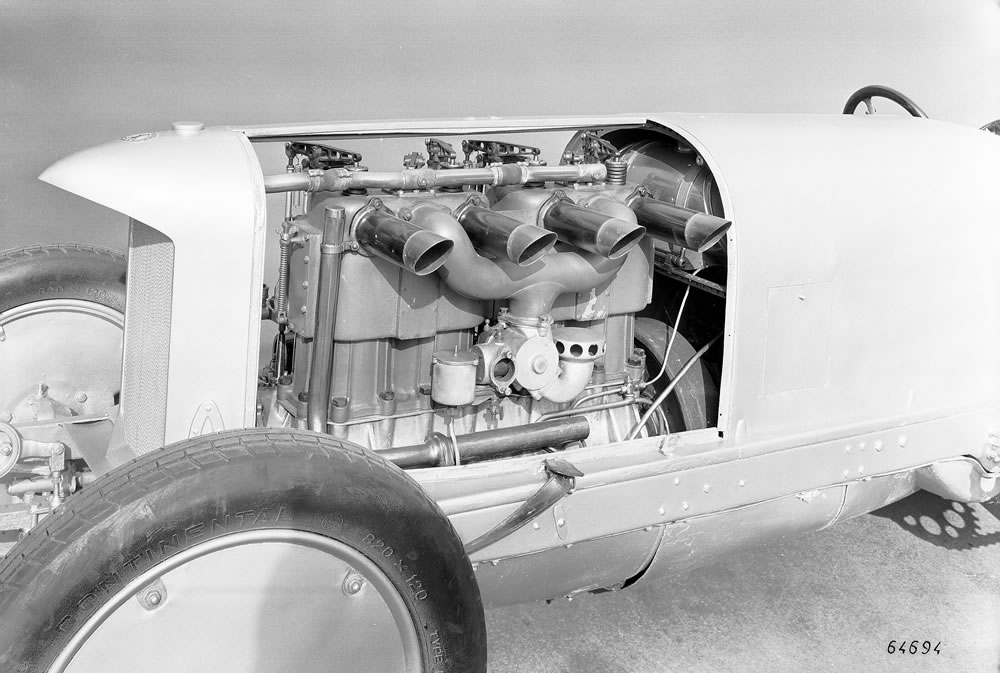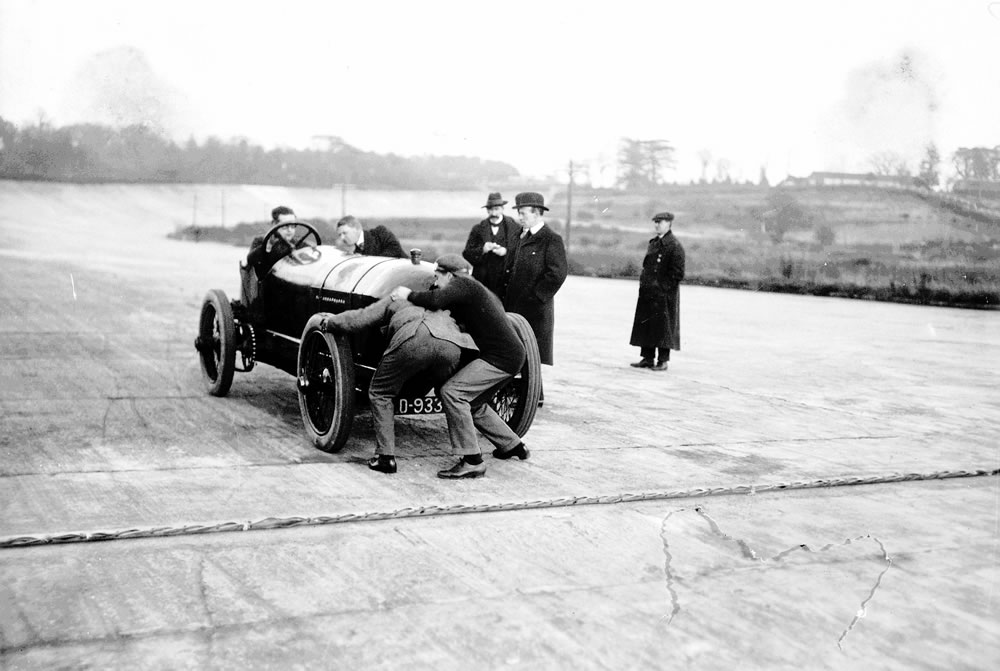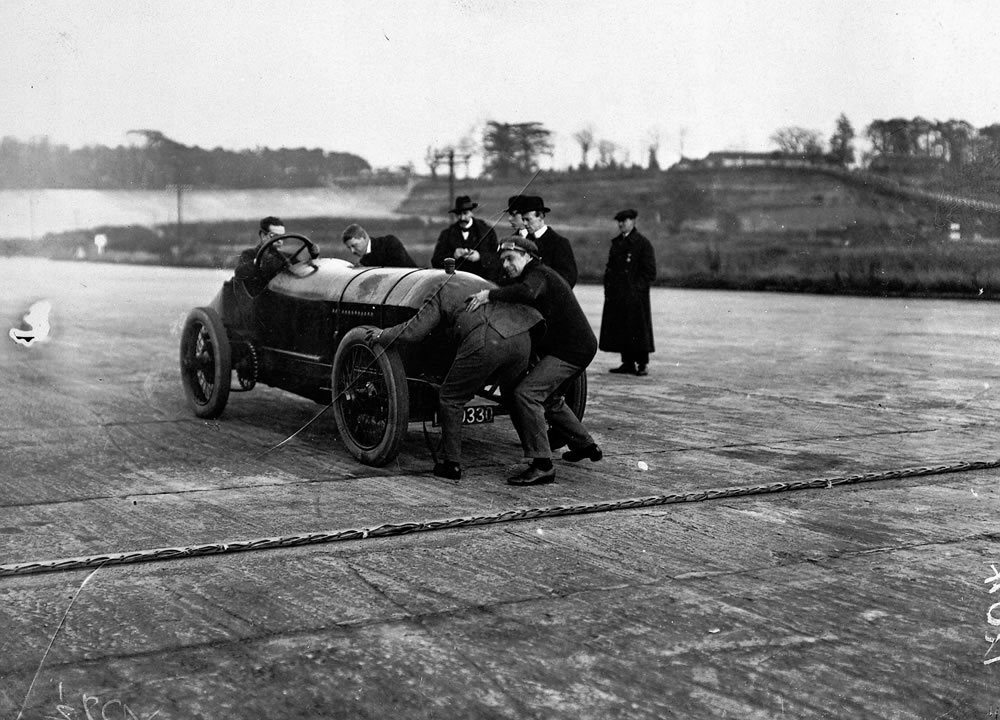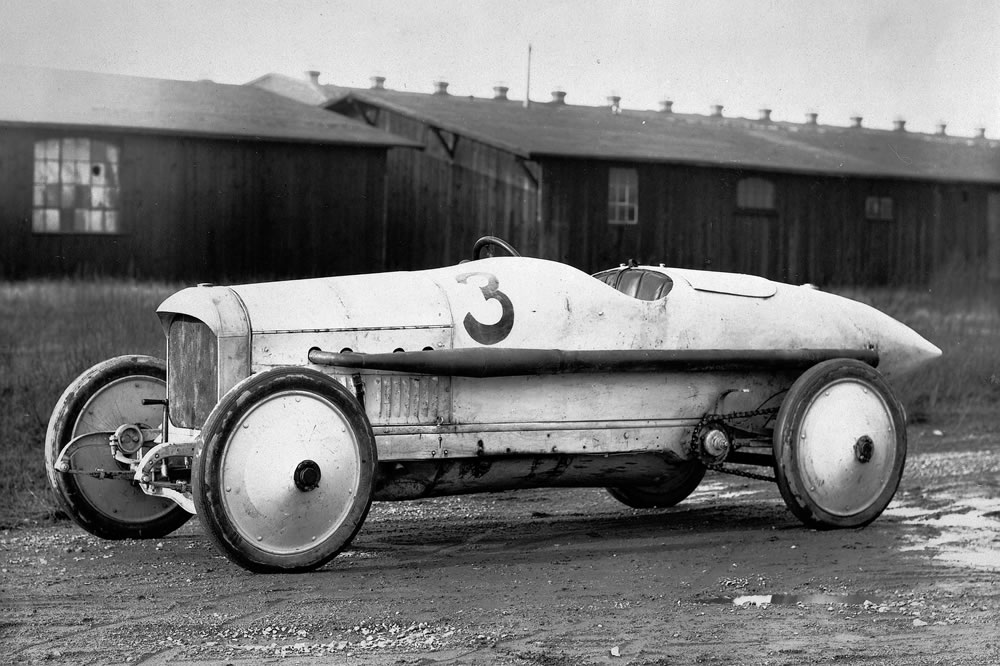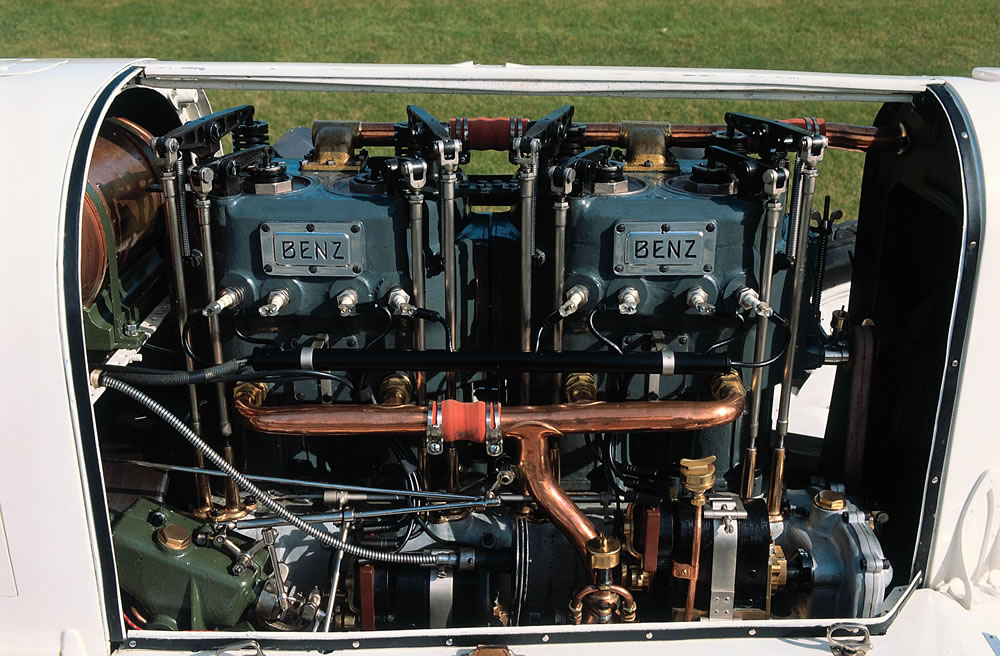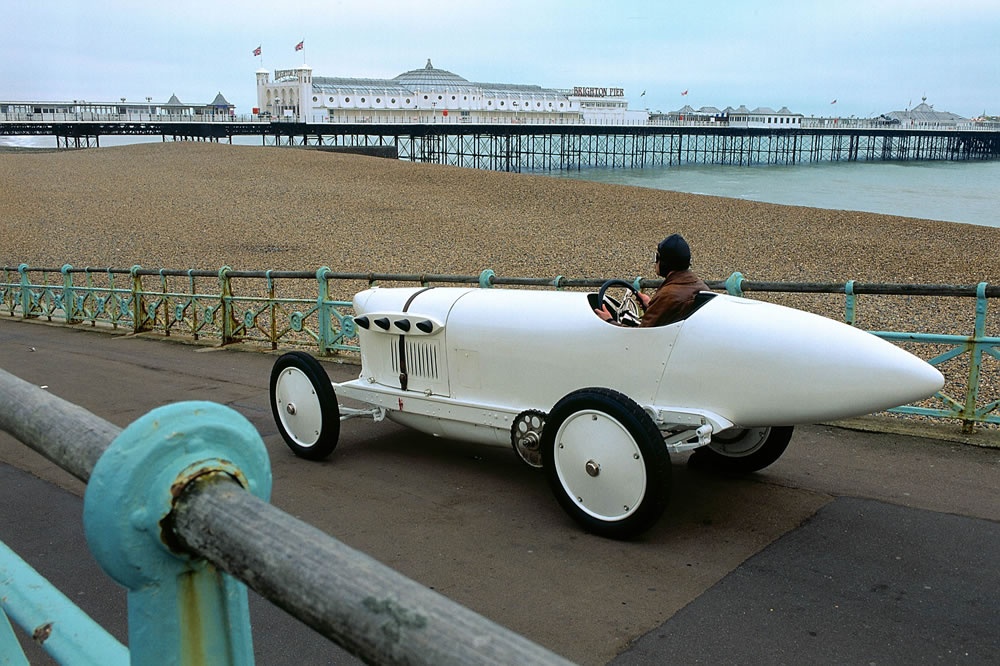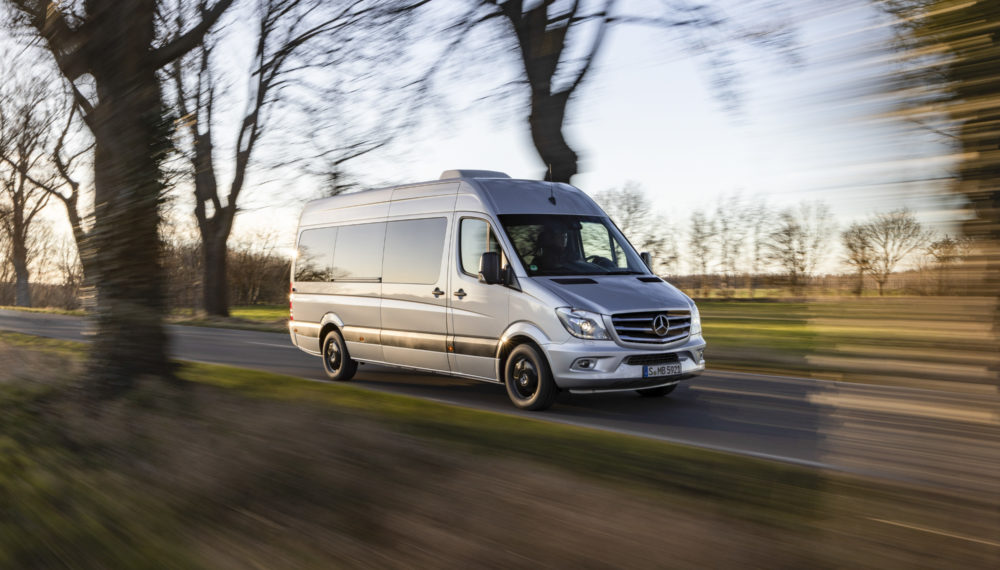Shortly before Christmas Eve 1913, British racing driver L. G. Hornsted set two new world records at Brooklands, for the half-mile and the kilometre. He was driving a Benz 200 hp, a modified variant of the “BlitzenBenz”, or “LightningBenz” – already a legend at the time. In January 1914, the Britain, born in 1884, added seven more records to his tally of victories.

200 hp Benz, called “Blitzen-Benz”, a record-setting car from the year 1909
What a great Christmas present to himself: three days before Christmas Eve 1913, British racing driver Lydston Granville Hornsted, better known by his initials L. G. or his nickname Cupid, headed out onto the track at Brooklands, southwest of London, to set new records in his Benz 200 hp. The average speeds achieved by Hornsted were 113.8 km/h over the half-mile (804,67 metres) and 118.8 km/h for the kilometre, both from a standing start. These world records are just two highlights in the extraordinary history of the Benz 200 hp racing cars, which became known as the “BlitzenBenz”, primarily in the United States of America, during the years 1910 to 1913. Hornsted’s performance was also evocative of the legendary, record-breaking drives of Victor Hémery in the first Benz 200 hp racer in November 1909, when the car broke the 200 km/h barrier. Hémery put in average speeds of 202.648 km/h over the kilometre distance and 205.666 km/h over the half-mile, both with a flying start.
The record-breaking car driven by Hornsted was the third in a line of six Benz 200 hp racing cars that began in 1909. Among its other successes, the 1912 incarnation took victories in hill climbs at Gaillon and Limonest, France, with Fritz Erle at the wheel. Then, in 1913, L. G. Hornsted made enquiries in Mannheim about acquiring a powerful vehicle for racing and record attempts. The English driver, who listed his occupations as driver, mechanic, and tester, was already operating as a representative for Benz & Cie. in England at the time. His aim with the 200 hp was to build on his previous successes in older Benz racing cars.
Hornsted wanted a number of changes to the vehicle’s original configuration. These included a modified radiator grille, a detachable wind deflector, and other technical modifications. Legend has it that one request, to extend the prodigious exhaust from the 21.5-litre, four-cylinder engine to the rear of the vehicle, was realised by attaching a stove pipe.

L.G. „Cupid“ Hornsted during a record run at Brooklands.
The vehicle, now painted blue, made its debut at Brooklands in November 1913; on 22 December, Hornsted set the first records. However, this was not enough for the young man, born the son of the British Vice-Consul to Moscow in 1884, who went on to put in a total of seven more record-breaking drives with the Benz 200 hp in January 1914. First up, on 14 January, were two world records over 2 miles (122.05 mph, 196.38 km/h) and 5 miles (116.08 mph, 186.77 km/h) with flying starts. Five months later, on 24 June 1914, Hornsted drove the mile at Brooklands at 124.12 mph (199.71 km/h). This was the first record to be set under the new two-way rule, which required an average speed from two runs in opposite directions – it was also the fastest speed ever recorded at Brooklands at that time. In July, Hornsted and his famous car recorded the best time among the racers competing in the Ostend one-kilometre race in Belgium, with a speed of 189.5 km/h.
Later in 1914, the record-breaking vehicle returned to Benz & Cie. in Mannheim, Germany, where it remained in the R&D department throughout the First World War. After the war was over, the Mannheim mechanics fitted new bodywork, painted in traditional white, to the chassis of Hornsted’s machine. The car took part in the 1921 inaugural race on the AVUS track in Berlin and in 1922 entered the one-kilometre race at Scheveningen in the Netherlands. In July 1922, the vehicle returned to Brooklands, where it successfully competed in a number of races with H. V. Barlow at the helm. On 30 September 1922, an accident near the end of a race all but destroyed the car when it shot over the barrier on the banked curve at the north end of the circuit.
